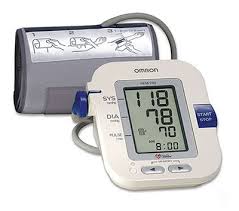A progressively rising blood pressure trajectory is not an inevitable part of aging in men who remain active and maintain high levels of cardiorespiratory fitness, a prospective, population-based study found.
 The study included almost 14,000 men without high blood pressure, cardiovascular disease, or cancer at baseline followed for three and a half decades.
The study included almost 14,000 men without high blood pressure, cardiovascular disease, or cancer at baseline followed for three and a half decades.
Men in the study who were categorized as having the lowest level of fitness, based on baseline treadmill tests, reached a systolic blood pressure (SBP) of >120 mmHg at approximately 46 years of age, compared with 54 years of age among those whose fitness levels were highest. Age-related diastolic blood pressure differences (DBP) were far more pronounced, with low-fitness men reaching >80 mmHg at approximately 42 years old compared with beyond age 90 in the highest fitness group.
“This suggests that highly fit men are likely to reach abnormal SBP values about a decade later than men in the low fitness category, implying that improving fitness levels may reduce the duration of elevated SBP,” researcher Junxiu Liu, MD, of the University of South Carolina Columbia, and colleagues wrote in the Journal of the American College of Cardiology, published online Sept. 15.
Exercise Keeps Heart Young
The study is one of two published in the issue suggesting that staying physically fit throughout life can keep aging hearts healthy.
In a separate investigation, researchers in Texas examined the impact of long-term exercise on left ventricular (LV) compliance and distensibility in around a hundred older men and women.
The study showed that while low levels of casual, lifelong exercise did not prevent decreased compliance and distensibility, four to five ≥30 minute exercise sessions a week throughout adulthood did prevent most age-related LV stiffness.
“This finding holds important implications for global health, as ventricular stiffening has been implicated in the pathophysiology of many common cardiovascular conditions affecting the elderly,” researcher Paul S. Bhella, MD, of the Institute for Exercise and Environmental Medicine, Texas Health Presbyterian Hospital, Dallas, and colleagues, wrote.
Fit Men Had ‘Younger’ BP
The study by Liu and colleagues included an all male cohort from the Aerobics Center Longitudinal Study, which was a large study that included mostly white, college-educated people with middle to high socioeconomic status.
The men were between the ages of 20 and 90 at study entry, and they completed between three and 28 (mean 3.8) follow-up medical examinations between 1970 and 2006. Fitness was measured by a maximal treadmill exercise test, and longitudinal data were analysed using linear mixed models.
Cardiovascular fitness was assessed using the Balke maximal treadmill exercise test, with total treadmill time (highly correlated with oxygen uptake) used as an index of aerobic power. Participants were classified into low (<33rd percentile), moderate (33rd to 66th percentile), or high fitness categories (>66th percentile), according to the distribution of age-specific treadmill time.
Information on age, smoking status, and alcohol consumption were obtained by self-administered questionnaire. Body fat percentage was assessed using hydrostatic weigh in, skin fold thickness measurements, or both.
Among the key findings from the study:
-DBP tended to increase until nearly 60 years of age, when a decrease was observed, while SBP tended to increase over all age periods.
-Multivariate analysis revealed that average SBP increased by 0.30 mmHg (95% CI 0.29-0.31) with 1-year age increment after adjusting for body fat percent, fitness, resting heart rate, glucose level, triglyceride level, cholesterol level, current smoking, heavy alcohol consumption, and parental history of hypertension.
– had a yearly increase of 0.14 mm Hg (95% CI 0.13-0.15) before age 60 years.
-Overall, abnormal SBP (>120 mm Hg) began to occur at approximately 50 years of age and abnormal DBP (>80 mm Hg) began to occur at 60 years of age.
-Higher fitness levels significantly modified the risk in SBP trajectory across the lifespan, and the age-fitness interaction remained significant after adjusting for known hypertension risk factors.
Study strengths included the large number of participants, the longitudinal measure of SBP, DBP, and other time varying covariates, and the assessment of body fat percentage to measure obesity.
Limitations included the exclusion of women from the study, as well as the inclusion of only a small percentage (5%) of nonwhite and low income men, which limited its generalizability to these populations.
Findings May Not Apply to Women, Nonwhite Men
In an editorial accompanying the study, Stanley S .Franklin, MD, of the University of California Irvine, and Gary L. Pierce, PhD, of the University of Iowa, Iowa City, wrote that the exclusion of women was a major study limitation.
“There is some evidence that men have a steeper rate of increase in aortic stiffening beyond 50 years of age compared with women; therefore, fitness may have a different modifying effect on SBP and DBP trajectory with aging in women than men,” they wrote.
Even with the limitations, Franklin and Pierce wrote that the study suggests “habitual aerobic exercise may counteract the burden of cardiometabolic abnormalities that accelerate artery stiffening- characterized as ‘early vascular aging’ — and therefore slow the onset and severity of isolated systolic hypertension.”
Regular Exercise Preserves LV Function
In the study by Bhella and colleagues, 102 healthy older people (>64 years of age) were recruited and screened for lifelong patterns of exercise. The participants were stratified into four groups: sedentary (<2 ≥30 minute sessions/week), casual (2 to 3 sessions/week) committed (4 to 5 sessions/week) and competitive (6 to 7 sessions/week).
Right heart catheterization and echocardiography were performed while pre-load was manipulated using lower body negative pressure and rapid saline infusion to define LV pressure-volume relationships.
Peak oxygen uptake and LV mass increased with escalating doses of lifelong exercise, with little change in systolic function. At baseline, LV distensibility was greater in committed (21%) and competitive (36%) exercisers than in sedentary participants.
Group LV stiffness constants (sedentary: 0.062±0.039; casual: 0.079±0.052; committed: 0.055±0.033; and competitive: 0.035 ±0.033) revealed increased stiffness in sedentary subjects compared with competitive athletes, whereas lifelong casual exercise had no effect. They also showed greater compliance in committed exercisers than in sedentary or casual exercisers.
 The researchers noted that sedentary aging, and the decreases in LV compliance and distensibility that accompany it, may set the stage for the cardiovascular conditions that affect the elderly, such as atrial fibrillation and heart failure with preserved ejection fraction.
The researchers noted that sedentary aging, and the decreases in LV compliance and distensibility that accompany it, may set the stage for the cardiovascular conditions that affect the elderly, such as atrial fibrillation and heart failure with preserved ejection fraction.
In a commentary published with the study, Wilbur Y.W. Lew, MD, of the VA San Diego Healthcare System and the University of California San Diego, wrote that the effects of exercise on the heart are multifactorial and complex and that potential factors that prevent age-related changes in LV compliance include lowering blood pressure and arterial stiffness, decreasing cardiovascular comorbidities, improving endothelial function, and activating metabolic and signaling pathways to reduce chronic inflammation, fibrosis, and LV remodeling.
“A long-term commitment to exercise preserves LV compliance comparable to a young heart,” he wrote. “This may facilitate diastolic filling and preserve diastolic function. We face challenges to establishing causality, identifying mechanisms, and applying these results to an increasingly sedentary population.”
Source: medpagetoday.com
